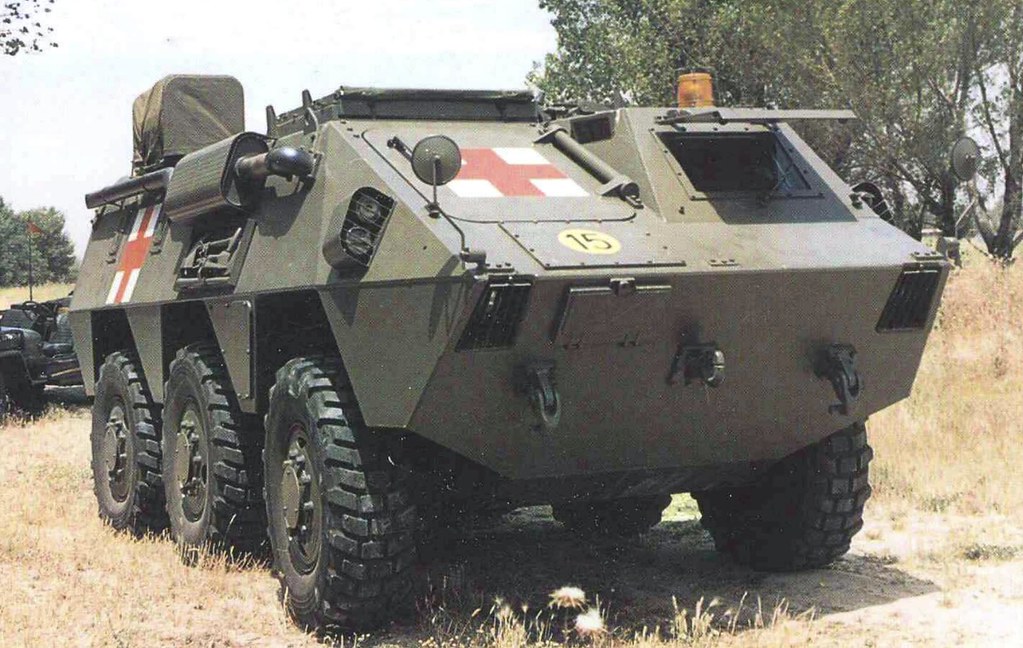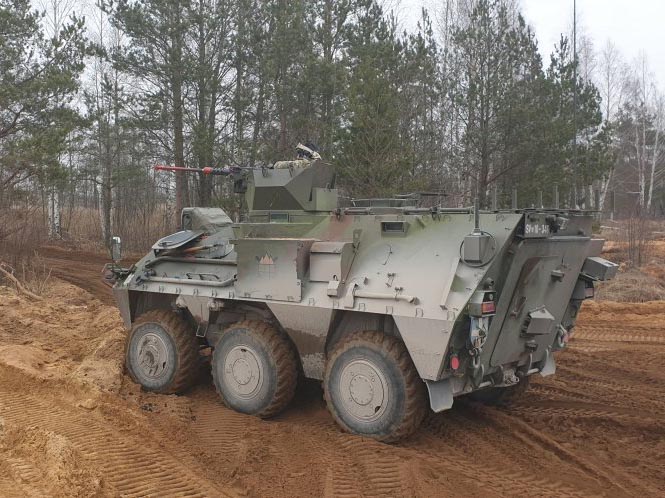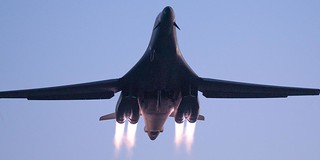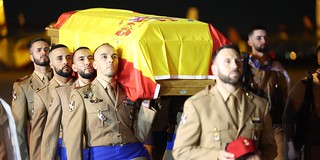The rare prototype of the Spanish BMR armored vehicle that appeared in Ukraine
Ukraine seems to have become the destination for the shipment of obsolete military material about which the Spanish government does not report.
A few days ago we saw the case of the Spanish CETME L rifles that have appeared in Ukraine, a light weapon whose defects caused numerous criticisms and its replacement by the G-36. Now, the surprise has been even greater.
The only prototype of the BMR VRAC appears by surprise in Ukraine
Yesterday, the Twitter account Ukraine Weapons Tracker, which has been publishing information about the weaponry used by both sides in the Russian invasion of Ukraine, published this photo of a rare prototype of the Spanish BMR armored vehicle, the Catastrophic Area Rescue Vehicle (VRAC). Ukraine Weapons Tracker notes that the vehicle is used for medical evacuation missions and is extremely rare: "In total, only about 3 vehicles are known to have been made". I already stated that this information is incorrect: not three were made, but a single prototype was made.

Along with that image of the vehicle, the same source publishes this other photo in which we see the prototype with its original civilian decoration, and the following black and white advertisement of the same armored vehicle.

I have been looking for the original sources of these images and have not found them. It should be noted that this VRAC should not be confused with the Contaminated Area Reconnaissance Vehicle, also called VRAC, used by the Army in NBC missions. At The Online Tank Museum they have this other photo of that BMR rescue prototype, taken from the book "BMR. Los blindados del Ejército Español" ("BMR. The armored vehicles of the Spanish Army"; Galland Books, 2008) by José María Manrique García and Luis Molina Franco (the VRAC is the vehicle on the right, the other is a prototype of another different version of the BMR, the Finisterre Project):

The vehicle had been abandoned for years in Paracuellos de Jarama
In the aforementioned book it is noted that Pegaso began studying the VRAC at the end of the 1980s, thinking especially about catastrophes in nuclear power plants, in chemical industries or petrochemical complexes: "This vehicle it had a prehensile telescopic arm installed on the outside for handling loadsand a powerful water and foam launcher to put out fires," says the aforementioned book. The other prototype that appears in the photo was the Finisterre Project, similar to the VRAC. The book indicates that both vehicles "are forgotten in Paracuellos", where there are some Santa Barbara Sistemas facilities.
The oldest reference I have found about this VRAC is at nº40 of Revista Española de Defensa (June 1991), published by the Spanish Ministry of Defense. On page 43 and talking about the Tecnova 91 fair, held that year at the Madrid fairgrounds, it was indicated that the state company Santa Bárbara had presented "the VRAC prototype (Rescue Vehicle for Catastrophic Areas), developed from the military BMR, as a car intended for civil protection missions."
In number 110 of the same Revista, corresponding to April 1997, a quote from the VRAC appeared again, pointing out that Santa Bárbara had had that vehicle since 1989. The last reference to this vehicle on the Ministry of Defense website appeared at a glossary of military terms in the 2009 edition of the site, now abandoned but still operational, noting that the acronym VRAC corresponds to "armored rescue vehicle in catastrophic areas."
The VRAC has been painted with the Spanish Army's olive green color
Thus, we are faced with a vehicle even rarer than some think, since there would not be three prototypes manufactured, but one, which has finally ended up in Ukraine. It can be assumed that before reaching that country, it will have had to receive a tune-up, since in the end we are talking about a 1989 vehicle that will have been abandoned for many years. There is a detail of the vehicle that is very significant: the vehicle photographed in Ukraine shows the same olive green color that Army vehicles are painted with, so it can be assumed that the vehicle will have been sent by order of the government.

In July the Ministry of Defense announced the sending of a BMR ambulance to Ukraine
Regarding the possible origin of this vehicle, on July 24, 2023, the Spanish Ministry of Defense reported on the shipment to Ukraine of "a BMR armored ambulance (which will go to different military hospitals )". The ambulance versions of the BMR (you can see on these lines a photo of one of these vehicles, published by Medicina Militar magazine in 1987) do not have the same appearance as the VRAC prototype. So far no photo of that BMR ambulance sent to Ukraine has been published. Everything seems to indicate that the BMR sent was actually the VRAC.

It should be noted that the VRAC prototype that has appeared in Ukraine has a certain resemblance to the LKOV Valuk, the Slovenian relative of the BMR that we saw here in April. Slovenia has sent 20 of these vehicles to Ukraine. However, there are clear differences that allow the Valuk to be distinguished from a BMR, starting with its front part.
---
Photo: Ejército de Tierra. A BMR of the Cavalry Regiment No. 12 "Farnesio" of the Brigade "Galicia" VII (BRILAT).
|
Don't miss the news and content that interest you. Receive the free daily newsletter in your email: |
- Most read
- US F-35A fighters flying with Polish F-16s over Poland at a time of great tension
- The brutal 'touch and go' of a Lufthansa Boeing 747 at Los Angeles Airport
- The deployment of Spanish soldiers of the Regulars and BRILAT near Russian territory
- Eurofighter vs F-35: the opinions of professional pilots on these advanced fighters
- The firearms used by the Pontifical Swiss Guard, the smallest army in the world
- Sierra Army Depot, a huge United States base with hundreds of Abrams tanks stored
- Portugal confirms that it has begun its transition to the F-35 and indicates bad news for Spain

 ES
ES








Opina sobre esta entrada: